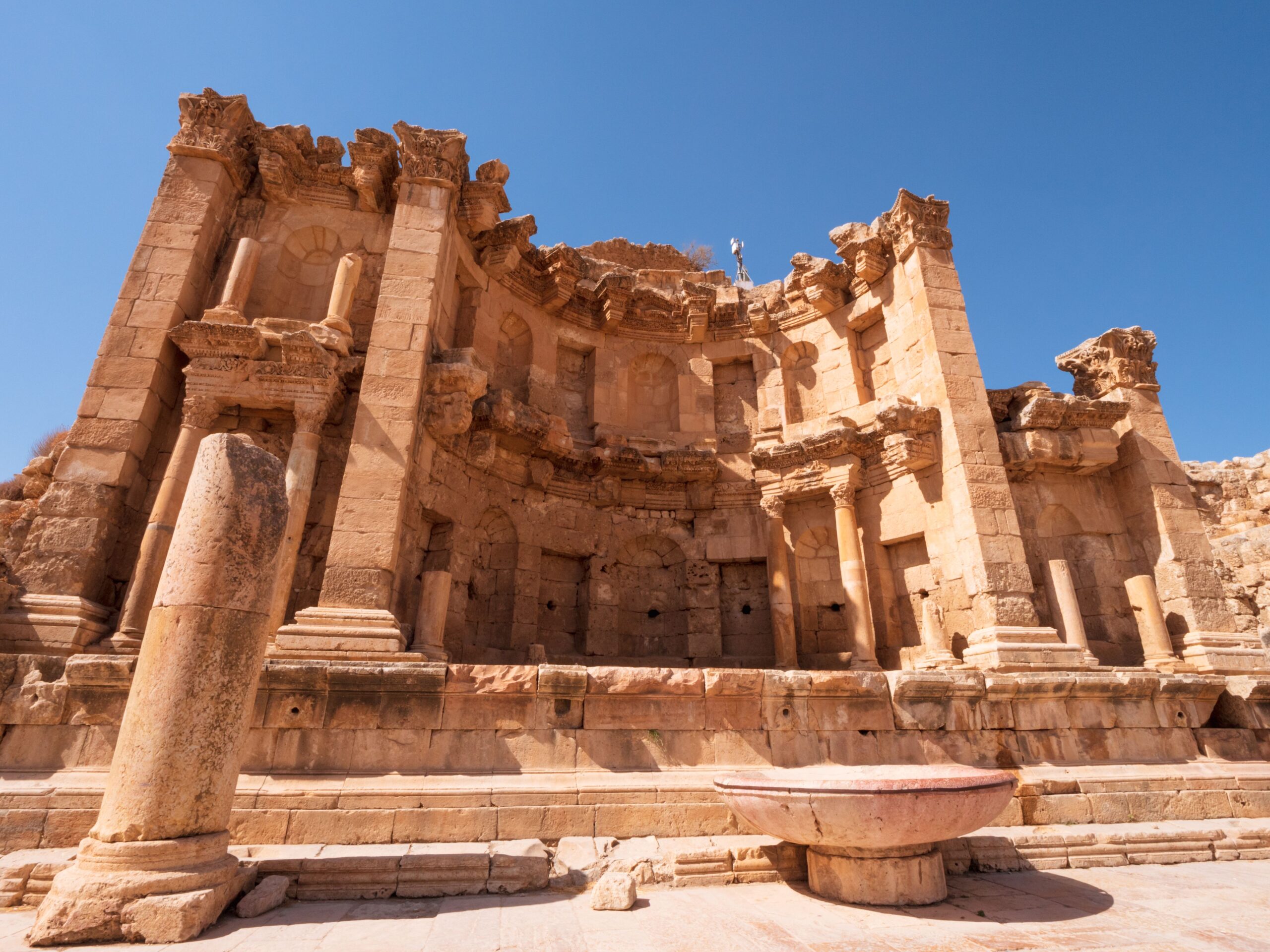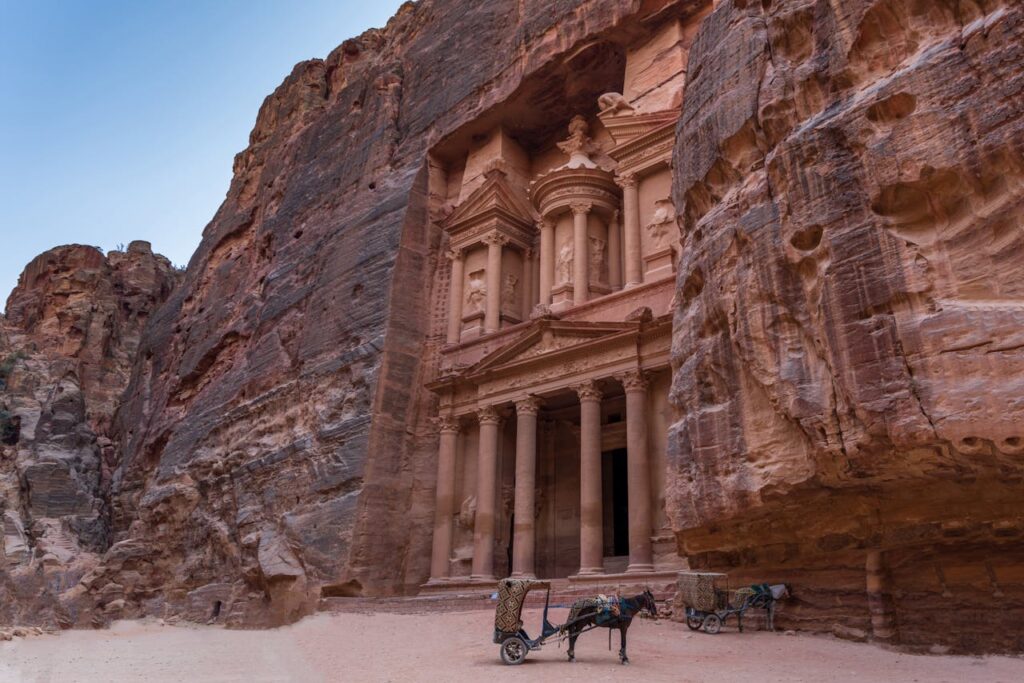UNESCO World Heritage Sites in Jordan and Qatar You Can’t Miss

Jordan and Qatar house some of the world’s most remarkable UNESCO World Heritage Sites, offering visitors a journey through ancient civilizations and architectural marvels.
These countries showcase extraordinary cultural treasures that have shaped human history for millennia.
Whether you’re drawn to rose-red rock formations or ancient trading posts, these destinations promise unforgettable experiences that connect you with our shared heritage.
Petra: Jordan’s Crown Jewel
Petra stands as Jordan’s most famous archaeological wonder and one of the New Seven Wonders of the World.
This ancient Nabataean city, carved directly into rose-red sandstone cliffs, dates back to the 4th century BCE.
NOTE: The Treasury (Al-Khazneh) is Petra’s most photographed monument, but the site contains over 800 individual monuments.
The Nabataeans were master traders who controlled crucial trade routes between Arabia, Egypt, and the Mediterranean.
Their sophisticated water management system allowed this desert city to thrive for centuries.
Visitors can explore tombs, temples, and an ancient amphitheater that once seated 3,000 spectators.
The site’s dramatic landscape and intricate facades make it a photographer’s paradise and a historian’s dream.

Wadi Rum: Jordan’s Valley of the Moon
Wadi Rum Protected Area earned its UNESCO status in 2011, recognized for both its natural beauty and cultural significance.
This desert landscape features towering sandstone mountains and granite outcrops that create an otherworldly atmosphere.
NOTE: The area spans 720 square kilometers and contains prehistoric rock art dating back 12,000 years.
The desert’s red sand dunes and natural rock bridges have served as backdrops for numerous Hollywood films, including Lawrence of Arabia and The Martian.
Bedouin communities have inhabited this region for thousands of years, leaving behind petroglyphs and inscriptions that tell stories of ancient hunting scenes and daily life.
Visitors can experience desert camping, camel trekking, and stargazing in one of the world’s most pristine night skies.
Al Zubarah Archaeological Site: Qatar’s Trading Heritage
Al Zubarah represents the Gulf’s best-preserved example of an 18th and 19th-century merchant town.
This fortified coastal settlement was once a major pearl fishing and trading center that connected the Arabian Peninsula with the wider world.
NOTE: The site includes the remains of palaces, mosques, streets, and a double defensive wall system.
The archaeological evidence reveals sophisticated urban planning with residential quarters, souks, and industrial areas.
Al Zubarah Fort, built in 1938, now serves as a museum showcasing artifacts that illuminate daily life in historical Qatar.
The site demonstrates how maritime trade shaped the region’s development and established Qatar’s position as a crucial link in international commerce.
Planning Your UNESCO Adventure
Visiting these remarkable sites requires proper documentation for international travelers.
Most visitors will need to obtain the necessary visas before embarking on their cultural journey.
NOTE: Visa requirements vary significantly based on your nationality and intended length of stay.
For Qatar, travelers can apply for an e-Visa for Qatar through a streamlined online process.
The Qatar e-Visa allows stays of up to 30 days and covers tourism, business, and transit purposes.
Citizens of GCC countries (Bahrain, Kuwait, Oman, Saudi Arabia, UAE) can enter Qatar without a visa using only a valid national ID card.
Jordan offers multiple visa options including an online application system. The eVisa for Jordan provides flexible validity periods ranging from 2-month single-entry permits to 5-year multiple-entry visas.
The application process involves completing an online form and making payment through secure digital channels.
NOTE: Both countries require passports valid for at least 6 months from arrival date.
Preserving Cultural Legacy for Future Generations
These UNESCO World Heritage Sites represent irreplaceable links to our collective past.
Jordan’s Petra and Wadi Rum showcase the ingenuity of ancient civilizations adapting to challenging desert environments.
Qatar’s Al Zubarah demonstrates how strategic location and maritime expertise built prosperous trading networks across vast distances.
Responsible tourism plays a crucial role in protecting these sites for future generations.
Visitor fees support conservation efforts and local communities that serve as guardians of these treasures.
By exploring these remarkable destinations, travelers contribute to ongoing preservation initiatives while gaining profound appreciation for human achievement across the centuries.


